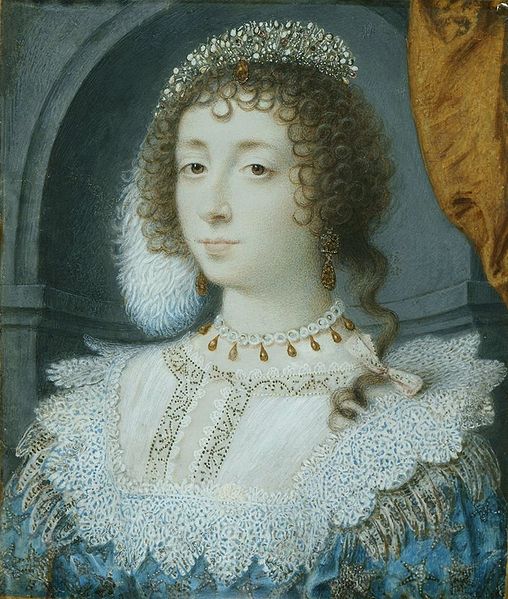



The social tensions leading to the English Civil War were reflected in English fashion, with the elaborate French styles popular at the courts of James I and his son Charles I contrasting with the sober styles in sadd or somber colours favoured by Puritans and exported to the early settlements of New England.
In the early decades of the century, a trend among poets and artists to adopt a fashionable pose of melancholia is reflected in fashion, where the characteristic touches are dark colours, open collars, unbuttoned gowns or doublets, and a generally disheveled appearance, accompanied in portraits by world-weary poses and sad expressions.
Figured silks with elaborate pomegranate or artichoke patterns are still seen in this period, especially in Spain, but a lighter style of scrolling floral motifs, woven or embroidered, was popular, especially in England.
The great flowering of needlelace occurred in this period. Geometric reticella deriving from cutwork was elaborated into true needlelace or punto in aria (called in England "point lace"), which also reflected the popular scrolling floral designs.
In England, embroidered linen jackets fastened with ribbon ties were fashionable for both men and women from c. 1600–1620, as was reticella tinted with yellow starch. Gowns with split sleeves (often trimmed with horizontal rows of braid) were worn by both men and women.
From the 1620s, surface ornament fell out of fashion in favour of solid-colour satins, and functional ribbon bows or points became elaborate masses of rosettes and looped trim.
In England from the 1630s, under the influence of literature and especially court masques, Anthony van Dyck and his followers created a fashion for having one's portrait painted in exotic, historical or pastoral dress, or in simplified contemporary fashion with various scarves, cloaks, mantles, and jewels added to evoke a classic or romantic mood, and also to prevent the portrait appearing dated within a few years. These paintings are the progenitors of the fashion of the later 17th century for having one's portrait painted in undress, and do not necessarily reflect clothing as it was actually worn.
To about 1613, hair was worn feathered high over the forehead. Married women wore their hair in a linen coif or cap, often with lace trim.
In a characteristic style of 1625–1650, hair was worn in loose curls or waves to the shoulders on the sides, with the rest of the hair gathered or braided into a high bun at the back of the head. A short fringe or bangs might be worn with this style. Very fashionable married women abandoned the linen cap and wore their hair uncovered or with a hat.
No comments:
Post a Comment